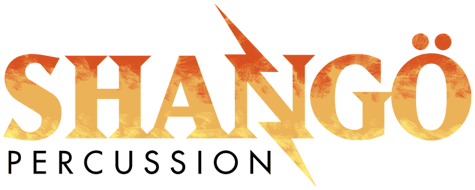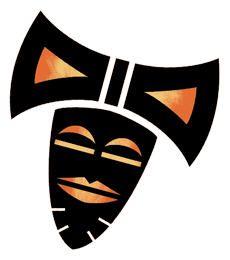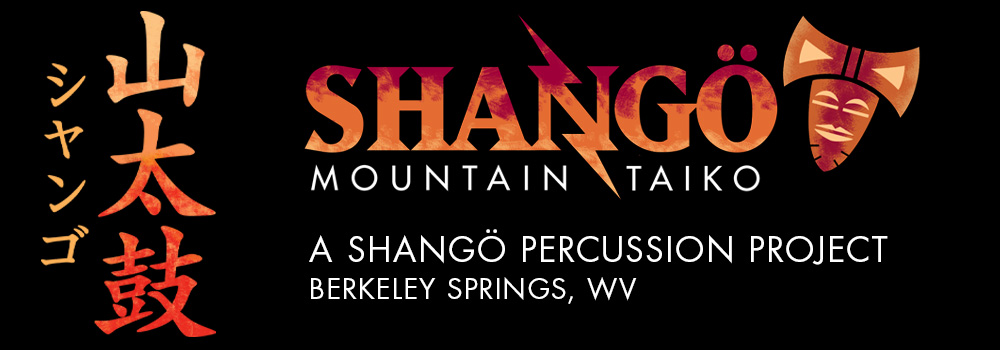The Taiko Page
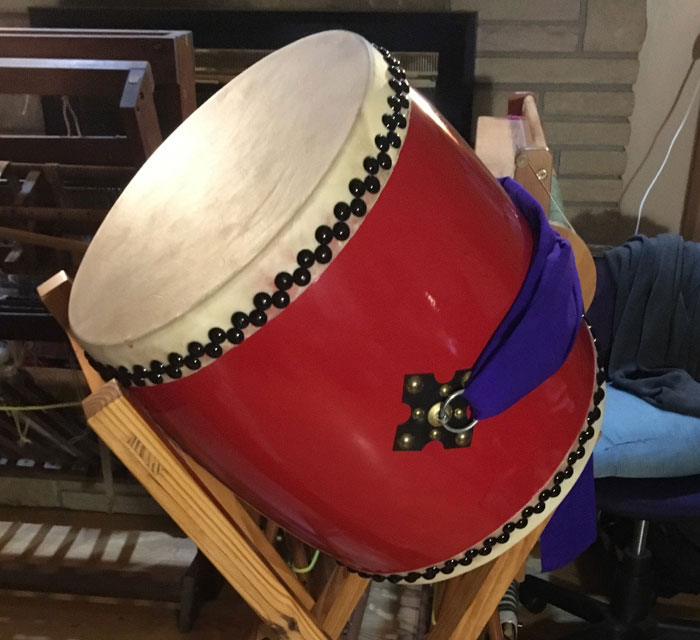
Taiko – a “medium-small” chu-daiko nagado taiko drum. This type is an Okinawan Eisa-okaiko style.
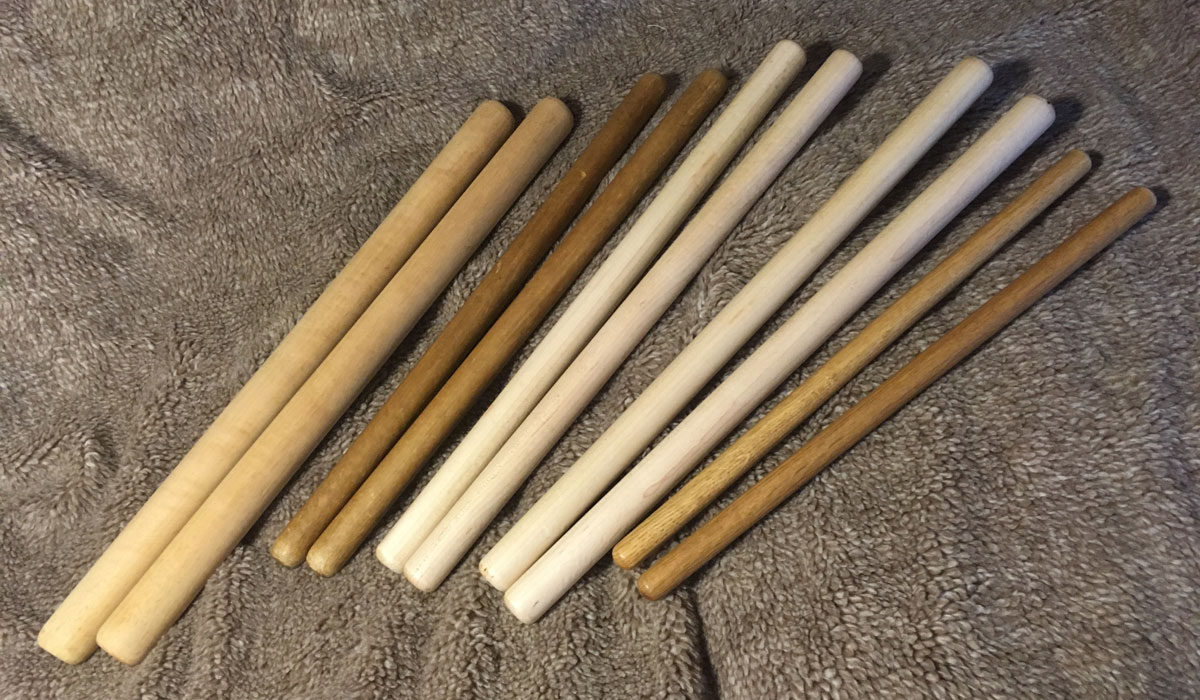
Bachi – drumsticks. From Left, Odaiko-bachi. Homemade and standard chudaiko-bachi, shime-bachi cut down from standard kit drum sticks.
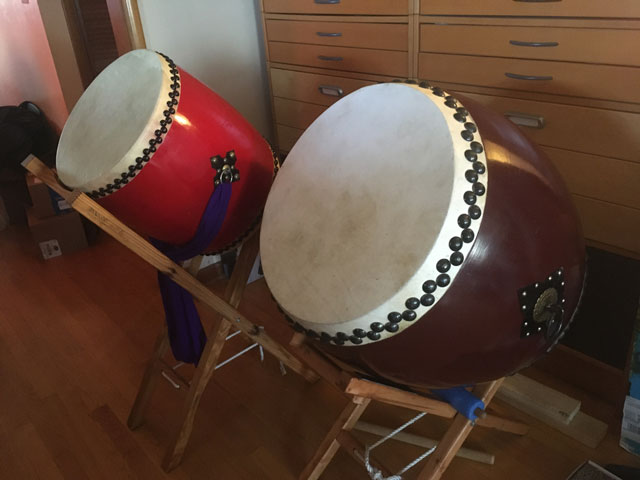
Nagado Daiko – in 2020, Shangö cooperatively purchased a second large nagado chu-daiko drum to add to our arsenal. We hope to cultivate more players. Left. 17" Eisa-odaiko. Right. 24" Nagado-daiko.
Help Us Out!
Being a new group, we need pretty much everything, but mostly drums! Taiko Drums are scary expansive, it’s the main barrier to entry for Taiko! Domo arigato gozaimasu for however you can help!
Learn Taiko!
Shangö Taiko Player Kurt Griffith is interested in cultivating more local Taiko players. More players, more fun, more DON! Please contact us if you are interested in workshops or regular classes.
We periodically offer Taiko Workshops in Berkley Springs. Drop us an email for more information or to get a head's up! DON tsuku Don Don! - Find out more here!
We're starting a set of practice sessions for the Taiko Performace at the Morgan Arts Council Cherry Blossom event on Satruday April 29th. If you're interested in participating please contact us.
Please Email Us for more information or with any questions.
See also Taiko Stuff on the Resources Page.
Shangö Mountain Taiko
Bringing the Heartbeat of Japanese Taiko to the Mountains of Appalachia.
Shango Mountain Taiko debuted at Morgan Arts Council’s Sakura Matsuri Japanese Spring Festival on Saturday, April 29th. We have since gone on to perform at Bringing in the May Farie Festival and are continuting to train and study Taiko!
We have done something audacious and a little crazy – launching one of the very few (to our knowledge) rural/small town community taiko groups in America! We hope you'll come play with us and expereince Taiko!
We are now accepting new trainees! We’re looking for people who are interesed in learning Taiko and perhaps joining the Taiko Team - no experience required!!! - just enthusiasim and willingness to practice and study - and sweat a little! So please come out to a traning date, or catch us at an event and and cheer us on, and we’ll take your information, or sign up using the form below. It's the best workout you'll ever love.
Find out more about drumming with Shangö Mountain Taiko and see our Training Calendar here!
Please contact Kurt , or join our Email List if interested in participating.
Find out more here.
The Heartbeat Drums of Japan
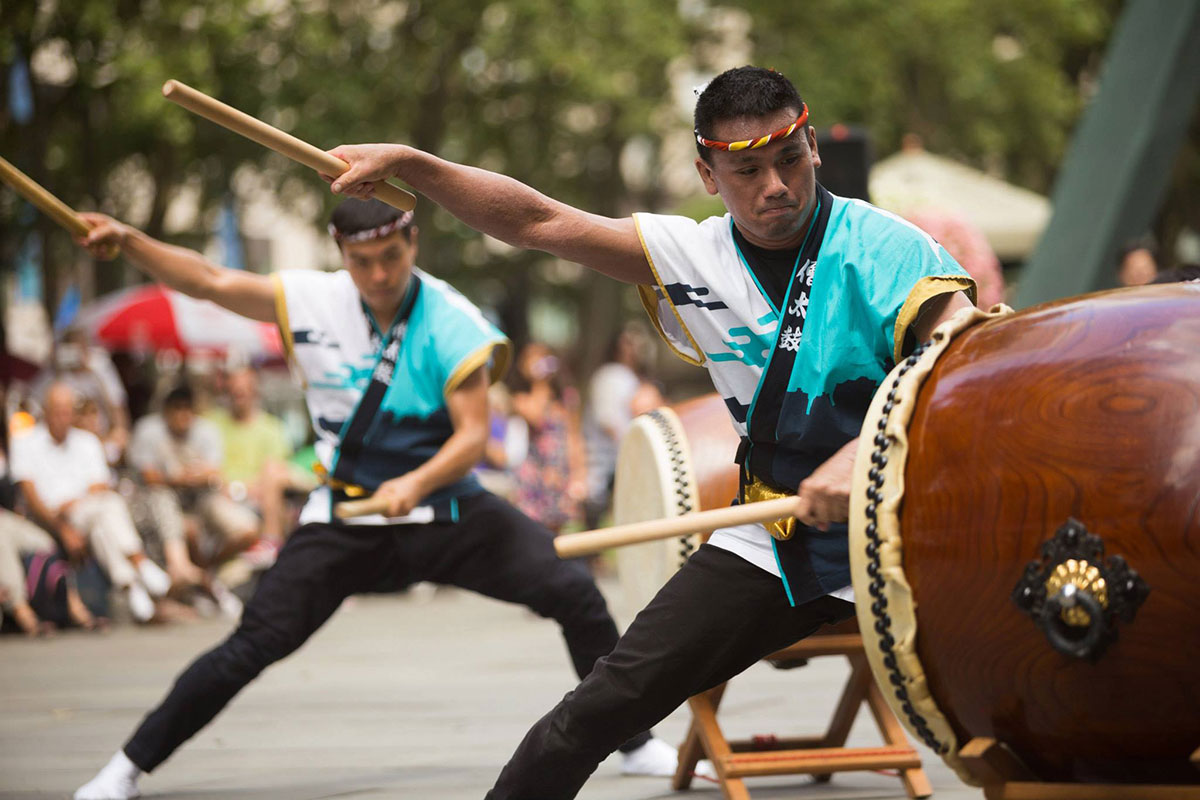
Soh Daiko performing Miyake at an Obon festival in New York City.
Taiko are the amazing, impressive, and wonderfully powerful heartbeat drums of Japan. Taiko literally means “Big Drum,” but also refers to kumi-daiko, the ensemble group drumming growing in popularity over the last half century. Borrowing on thousands of years of tradition, taiko groups are now taking the style worldwide. Taiko promises to be the first native Japanese music to spread through the world. Taiko has been spreading in North America since its introduction in the 1960s by the “Father of North American Taiko,” Seiichi Tanaka. You may have seen Taiko performed at a Cherry Blossom Festival or an Asian Arts event, or seen the world-renowned Kodo, the electrifying DrumTAO or our regional Taiko groups The Mark H Taiko Connection (MHTX), Miyake Taiko, or Pittsburgh Taiko.
Shangö Drummer Kurt Griffith has long had an interest in Japanese Taiko drumming and has lusted after Taiko Drums since being inoculated in the 80’s seeing Kodo and NYC's home town pioneering taiko group Soh Daiko. In the summer of 2018, he was fortunate enough to acquire a used medium-small chu-daiko and has been getting acquainted with “his little friend” since. He attended the 2019 East Coast Taiko Conference in Ithaca, NY to get a dose, take in some intensive workshops, and re-connect with the expanded and thriving North American Taiko Community.
At the Conference he was often asked “what group are you with?” He had to explain that he was the taiko player in Shangö Percussion, and likely the only taiko player in Morgan County, WV. We're a little off the main line out here. But he's hoping to try and change that, and inspire some of his drum mates to learn taiko!
Since then, Shangö has been gradually incorporating taiko drums and intorducing Taiko rhythms into our Worldbeat jams and starting to teach Taiko.
Overview
"Taiko" in general is often used to mean the relatively modern art of Japanese drum ensembles (kumi-daiko), but the word actually refers to the taiko drums themselves. Literally, taiko means "fat drum," although there is a vast array of shapes and sizes of taiko. Within the last fifty years since kumi-daiko was created, it has seen phenomenal growth to the point where there are over 8,000 taiko groups in Japan by some counts. Borrowing on thousands of years of tradition, taiko groups are now taking the style worldwide. Taiko promises to be the first native Japanese music to spread through the world.
People are sometimes confused by the frequent usage of the word "daiko", which is a suffix used to indicate a type of drum, a taiko group, or a style of taiko playing, in a compound word. When used in a compound word, the "T" sound in "taiko" changes to a "D" sound. Thus, a taiko group from Edo would be called "Edo-daiko", for example... - The Taiko Resource. [ Read More ]
Playing Taiko and Renshu
Playing Taiko
Taiko, like many traditional music traditions, uses an oral nomenclature to teach and preserve songs. Each hit has a particular sound (phonic or syllable) to represent it. Memorizing these sounds and learning to “sing” the song is the first step in learning to play the patterns. An ancient taiko proverb, loosely translated, states “If you can say it, you can play it.” (Same in African and Middle Eastern!)
Basic Kuchishoga
| DON | hard hit on drumhead; multiple hits written as dogo, doro or doko |
| tsu | soft hit on drumhead; multiple hits written as tsuku |
| ka | sharp rap on the rim; wood sound; multiple hits written as kara or kaka |
| su | rest or space; “empty hit” (some patterns might use tsuku, etc. for different timings) |
Tanaka Sensei of the SF Taiko Dojo, considered the father of modern taiko in North America, wrote a short piece called Renshu (literally means practice or training) which incorporates these basic hits and is used to teach beginners. You might give it a try at home.
As World percussion enthusiasts, we can talke some encouragement that much of basic taiko technique translates fairly neatly to Djun-Djun.
RENSHU (“Practice”)
composed by Seiichi Tanaka, SF Taiko Dojo
| ichi (one) | ni (two) | san (three) | shi (four) | |
| 1a. | DON | DON | DON | DON |
| 1b. | DON – DON | don – don | DORO – tsuku | DON – DON |
| 2. | DORO – tsuku | DORO – tsuku | DORO – tsuku | DON – DON |
| 3. | DON – kara | DON – kara | DON – kara | kara – kara |
| 4. | DON – tsuku | DON – tsuku | DON – tsuku | DON – DON |
| 5. | su – DON | su – DON | su – DON | DON – su |
Play each line twice. Note that the first line (1a-b) is eight counts long. Generally, hands alternate Right-Left. Exceptions are lines 3 and 4 where the DON—ka-ra and the DON—tsu-ku are played R—R-L.
Different instruments also have their own vocabulary, so you might hear:
shime — TE -‘n – TE-RA – tsu-ku – tsu-ku – TE-‘n – tsu-TA – TE-‘n – i – ya
atarigane — chi – chan – cha-cha – chi-ki – chi-cha – chan – cha-cha – chi-ki
odaiko — su-do – don – don – su-do – don – don – do-don – su
Please see the very helpful Taiko Primer from Seattle Kokon Taiko for More!
https://seattlekokontaiko.org/about/taiko-primer/
Renshu 3 Speeds/Volumes – Performed by Reid Taguchi, San Fernando Valley Taiko.
Playing Taiko & Renshu — The basics of playing Taiko, Kuchishoga and the Renshu patterns.
Download/View PDF
Two rhythms that are iconic to Taiko the world over are Matsuri Daiko and Miyake. Well known, well loved, and played around the world — that just say "Taiko!" loud and clear. As it turns out, the ju-ichji (baseline) of Matursi Daiko is a very close match for our base rhythm 2/4. So we just had to start playing with incorporating the rhythm into our jams!
Matsuri Daiko
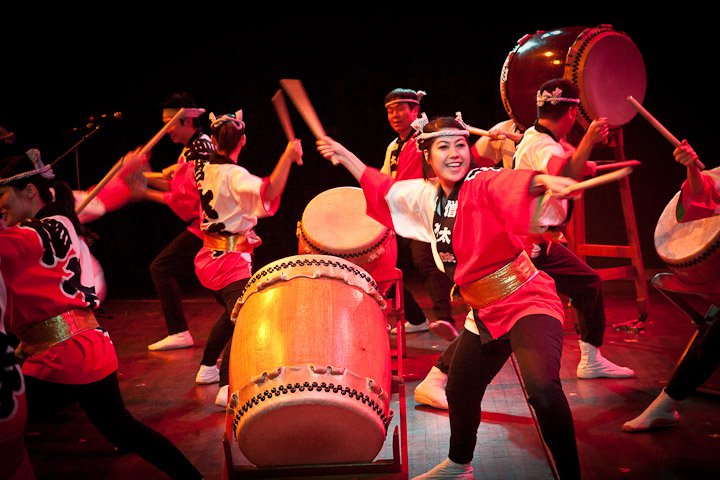
Soh Daiko performing Matsuri Daiko.
“Matsuri as we play it today is Taiko most at home at festivals — Matsuri literally means festival. The Matsuri percussion phrase familiar in North America though shows-up in Japanese dance, at Obon, and as part of Shinto festival music. In Japan, every village has its own “Matsuri.”
Don Don Don kara kaka, Don Don (su), Don Don kara kaka…
“…is a phrase recognized as the beginning, but it’s also the heart of the thing. What happens in between is moved by the spirit of the moment it is played, or traditions from the region in which it lives.” — Wendy Jedlička, Taiko Source
Matsuri Daiko or Bon-Daiko is not so much a specific song as a Category of Festival Drumming. According to Wendy’s Sources – “There really isn’t one song in the way we understand in North America. In Japan, every village has their own Matsuri based on familiar Bon Odori rhythms and new patterns added to express local culture. So really, just write your own.” So in that spirit, Kurt started experimenting with arranging “Ni-Yon Matsuri Daiko.” to put a Shangö flavor on the well-loved classic.
Gratitude to Soh Daiko for their pioneering work in bringing Taiko to the East Coast and sharing of Matruri Daiko.
Soh Daiko – performing “Matsuri”, Carnegie Hall Neighborhood Concert Series, New York City – Presented by Carnegie Hall as part of its Neighborhood Concert Series. Recorded March 27, 2011 at the Brooklyn Center for the Performing Arts. Soh Daiko, meaning “Peaceful Harmonious Drums,” was founded in 1979 as the first taiko ensemble on the East Coast as a project of the New York Buddhist Church.
Ni-Yon Matsuri Daiko
A melding of our base 2/4 rhythm with the taiko classic Matsuri Daiko.
Shangö Drummer Kurt Griffith discovered that our basic “shakedown” rhythm “2/4” (see above) was nearly identical to the base line of Matsuri Daiko [Festival Drums] that he learned from NY Taiko troupe Soh Daiko. He recorded this blended version - "Ni Yon" means "Two Four." Banzai! Download 1.5 MB
A short (1 min) clip of a version of an uptempo section of Ni-Yon Matsuri Daiko for a Drum ’N’ Splash promotion. Just a little messing about in Garage Band. Added tracks for Djembe, Doumbek, Bell and a little more Shime-daiko. A little less chaotoc than the version above. Download 1.9 MB
See also the Corona Matsuri Project for more Matrusri Daiko audio resources.
Ni Yon Matsuri Daiko - Festival Drums & 2/4
Drum patterns for the rhythms for Matsuri Daiko with base rhythm 2/4.
Download/View PDF
Miyake
Miyake is an iconic regional taiko rhythm made famous by Kodo, and since picked up and enthusiastically performed by Taiko groups around the world.

Kodo Performing Miyake.
About Miyake
“One piece that quickly began a standard part of Kodo performances was based on festival drumming from the island of Miyake, part of a chain of islands southeast of the main island of Honshu. This drumming – the proper name of which is kiyari-daiko – is part of a procession during the Gozu Tennō Matsuri, a festival held every July in honor of the deity Gozu Tennō (a deity of the underworld in Buddhist mythology).[1] During the procession on Miyake Island, a tradition that has continued since 1820, a single nagadō-daiko is strapped to a long pole and carried by two bearers as another person plays the drum.
“The drums are placed on a low stand or on no stand at all, supported just by the ropes tied around the drum and the pole. In assorted instances, such as when the procession is approaching the shrine, the bearers will place the drum on the ground and begin to play, placing the instrument mere inches from the ground and forcing the players to squat low in order to play the drums
“Kiyari-daiko, and Kodo's adaptation Miyake alternates between a set rhythmic pattern and solos. A drummer on one side of the drum – referred to as the “omote” (“front”) – repeats the set rhythm as another player on the other side – the “ura” (“back”) – accompanies with a rhythmic ostinato. This rhythm is repeated several times, and then another drummer takes over. Following several cycles of the base rhythm, getting faster each time with players on each side of the drums switching between main and accompaniment, several drummers improvise, and then the end of the performance is signaled by a return to the original base rhythm.” — Benjamin Pachter, Etso Et Taiko
Learn more about Miyake at ETSO ET TAIKO: The Taiko Magazine:
“Miyake” & Kodo’s Continued Arrangement of Regional Drumming Styles
Here's KODO and Kaoru Watanable totally rocking it.
Kodo – Miyake Daiko – Kodo, a Japanese taiko group, performing Kiyari-Miyake in their One Earth Tour Special
Kaoru Watanabe – Miyake Daiko – A very masterful solo performance of the traditional Taiko Rhythm Miyake, arranged by Kodo Performed by Kaoru Watanabe with participants in Silkroad's Global Musician Workshop at Tanglewood Music Center, July 2017.
Shangö Explorations of Miyake.
Miyake is a regional taiko rhythm nade famous by Kodo, and since picked up by Taiko groups around the word. We've started experiementing with the shape of Miyake. The two tracks are the Ko-Don Ko-Don baseline or Juichi, and the Main Patterns at two tempos. Kurt is working on learning the solo pieces, and teaching some of the other Shangö players.
Special arigato gozaimashita to Barbara Merjan of the Kaoru Watanabe Taiko Center in Brooklyn, NY for her excellent instruction in Miyake Daiko at the East Coast Taiko Conference 2019.
The jiuchi pattern for Miyake played at slow and medium tempos. Download 3 MB
The main pattern for Miyake Daiko. Download 3 MB
The simple Miyake arrangement – One player’s part, jiuchi, main patterns, and ending only, no solos. Download 4.23 MB
Miyake Kuchishoga
Drum pattens for Miyake. In japanese syllabic notation. [ Updated 3/9/19 ]
Download/View PDF
Simple Miyake for One Drum & Two Players
A basic arrangement for Miyake with optional solos. Partially inspired by Watanabe Sensei’s masterful performance. [ Updated 10/27/19 ]
Download/View PDF
Yama Taiko
New! An Original Experiment in Taiko and World Percussion
Yama Taiko - “Mountain Drums” was conveived and composed as a jam structure for combining Taiko and World Rhythms. The idea for “Mountain Taiko” was for a somewhat formal, march feeling, reflecting some flavor of the hills of West Virginia. Inspiration is drawn from the structure of Matsuri Taiko, Renshu, and the African, Middle Eastern, and World rhythms studied and performed by Shangö Percussion. A full arrangement would include some of those world percussion instruments as well for a heady mix. A further exploration of the work we've been doing incorporating taiko into Shangö‘s jams.
Yama Taiko - First Experimental Mix
My first take at an arranged recording, a first mix with all the parts. The Solos were a lot of fun! Played with a number of rhythms on Djembe, Doumbek, Bell, and pow pow drum acting as DjunDjun, and bamboo flute. The jiuchi track is taken from the clever resource Taiko Drum Machine. Headphones or subwoofer recommended to get the bass notes.
We've added a dedicated page for the project with the rhythms, arrangements, more experimental recordings and downlodables. Check it out! [ Updated - 16 August 2020 ]
Go to the Yama Taiko Page!
See also – Taiko Stuff on the Resources Page
